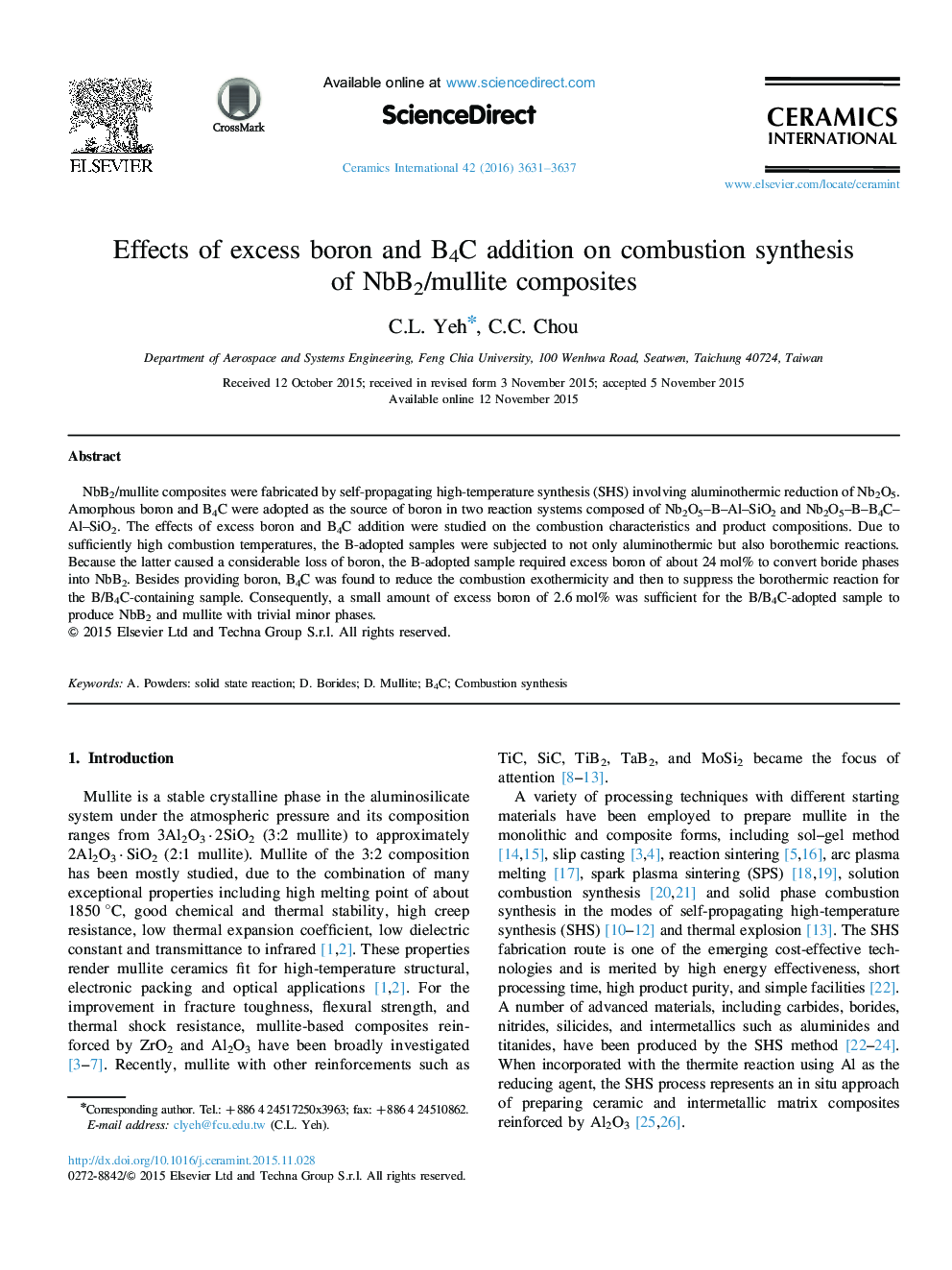| Article ID | Journal | Published Year | Pages | File Type |
|---|---|---|---|---|
| 1459592 | Ceramics International | 2016 | 7 Pages |
NbB2/mullite composites were fabricated by self-propagating high-temperature synthesis (SHS) involving aluminothermic reduction of Nb2O5. Amorphous boron and B4C were adopted as the source of boron in two reaction systems composed of Nb2O5–B–Al–SiO2 and Nb2O5–B–B4C–Al–SiO2. The effects of excess boron and B4C addition were studied on the combustion characteristics and product compositions. Due to sufficiently high combustion temperatures, the B-adopted samples were subjected to not only aluminothermic but also borothermic reactions. Because the latter caused a considerable loss of boron, the B-adopted sample required excess boron of about 24 mol% to convert boride phases into NbB2. Besides providing boron, B4C was found to reduce the combustion exothermicity and then to suppress the borothermic reaction for the B/B4C-containing sample. Consequently, a small amount of excess boron of 2.6 mol% was sufficient for the B/B4C-adopted sample to produce NbB2 and mullite with trivial minor phases.
